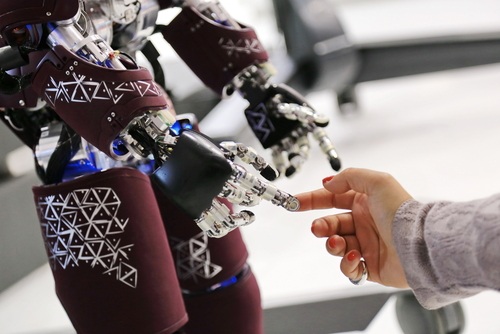Key Takeaways:
- Serve Robotics rolls out autonomous couriers in Atlanta.
- Robot food delivery cuts errors and boosts efficiency.
- Glitches, hacking risks, and privacy worries need fixes.
- Accessibility challenges affect disabled and elderly users.
- Clear rules and safety checks build public trust.
Robot Food Delivery Offers Big Promises
Serve Robotics began testing robots that carry meals on city sidewalks. These small bots zip between buildings to bring your lunch. They move at walking speed, so they share paths safely. First, restaurants pack the food into the robot’s cargo bay. Next, the bot uses maps and sensors to find your home or office. This robot food delivery aims to cut human errors and speed up service. Overall, the idea could reshape how we get takeout.
How the Robots Work
Each robot carries a camera, radar, and GPS inside. Also, it uses wheels that handle curbs and bumps. Meanwhile, a central computer plans the best route through busy streets. If a trash bin blocks its path, the robot finds a new way. In addition, staff can monitor each unit in real time. They can pause or redirect any robot instantly. This setup promises a smooth experience, even when sidewalks get crowded.
Robot Food Delivery’s navigation glitches
Despite high-tech gear, robots sometimes stall or bump lightly into obstacles. For example, heavy rain can blur cameras and slow decision making. Moreover, tight corners or unexpected barriers may confuse the sensors. At times, the robot halts and asks for human guidance. However, staff can fix the course within seconds through remote control. Still, these glitches raise questions about reliability in all weather and street conditions.
Security and hacking risks
Beyond navigation, robots face digital threats. Hackers might try to take control or steal delivery data. As a result, Serve Robotics encrypts its network links and software. In addition, the company runs regular security tests. However, no system stands completely immune to attacks. Therefore, ongoing updates and audits must stay a priority to keep customer data safe and prevent misuse.
Privacy and data concerns
These bots collect video and location logs around the clock. Although they blur faces and license plates, some worry about constant surveillance. Furthermore, data on delivery addresses and routes could reveal personal routines. Serve Robotics states it only uses information to improve service. Yet, clear limits on data storage and sharing help build trust over time. Companies and regulators must agree on strict privacy rules soon.
Accessibility and equity challenges
Not every neighborhood welcomes robot food delivery equally. Sidewalks with cracks or steep ramps can block the bots. Also, people with vision or mobility issues might find the robots in their way. Meanwhile, low-income areas could lack the infrastructure to support this tech. Without inclusive planning, robots risk leaving some residents behind. Thus, cities and companies should improve sidewalks and provide special access alerts.
Balancing innovation and regulation
To gain public trust, Serve Robotics must work with city officials and community groups. First, detailed safety standards need adoption. Next, local rules should address speed limits and sidewalk rights. Moreover, regular performance reports can keep the project transparent. In addition, pilot programs in varied neighborhoods will show real-world strengths and weak spots. Finally, an honest dialogue helps adjust policies before a full rollout.
Building Confidence Through Transparency
Customers feel safe when they know how the system works. Serve Robotics can share regular updates on safety tests and data practices. Similarly, offering live tracking and simple support channels makes the service more user friendly. With clear explanations about privacy and robot behavior, people will grow more comfortable with these devices. As a result, wider acceptance can follow, and robot food delivery will become part of daily life.
Looking Ahead
Robot food delivery in Atlanta starts as a promise and evolves with each test run. While the technology impresses, it also faces real hurdles in navigation, security, and fairness. By tackling these issues head on, Serve Robotics can set a positive path for cities everywhere. In the end, well-regulated, trustworthy service will help autonomous couriers win hearts and sidewalks.
Frequently Asked Questions
How do these robots deliver my food?
Robots pick up meals at a restaurant, lock them in a cargo bay, and drive on sidewalks. They use cameras, radar, and GPS to find your address.
What happens if a robot gets stuck?
If a bot can’t move, it sends an alert to a human operator. Then staff adjusts its route or guides it remotely to clear the blockage.
Are customer details safe with robot food delivery?
Serve Robotics encrypts all data and runs regular security checks. Moreover, it blurs faces and plates to protect bystanders’ privacy.
Will these robots work for people with disabilities?
The company plans updates to improve accessibility. Cities also must fix sidewalk issues and add alerts so robots avoid blocking key paths.

